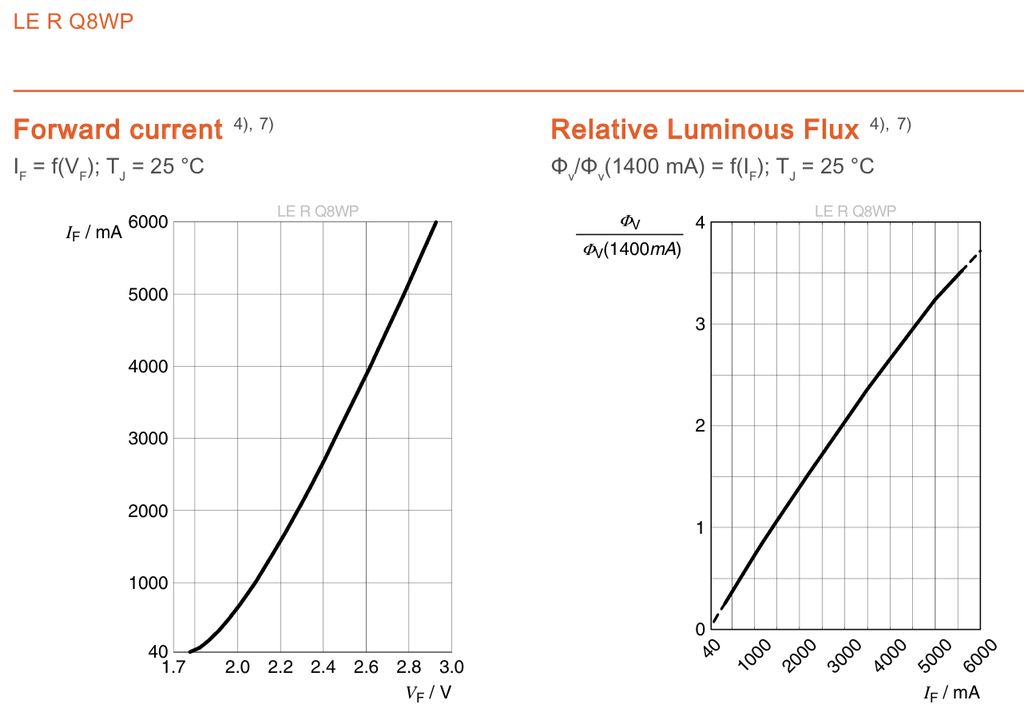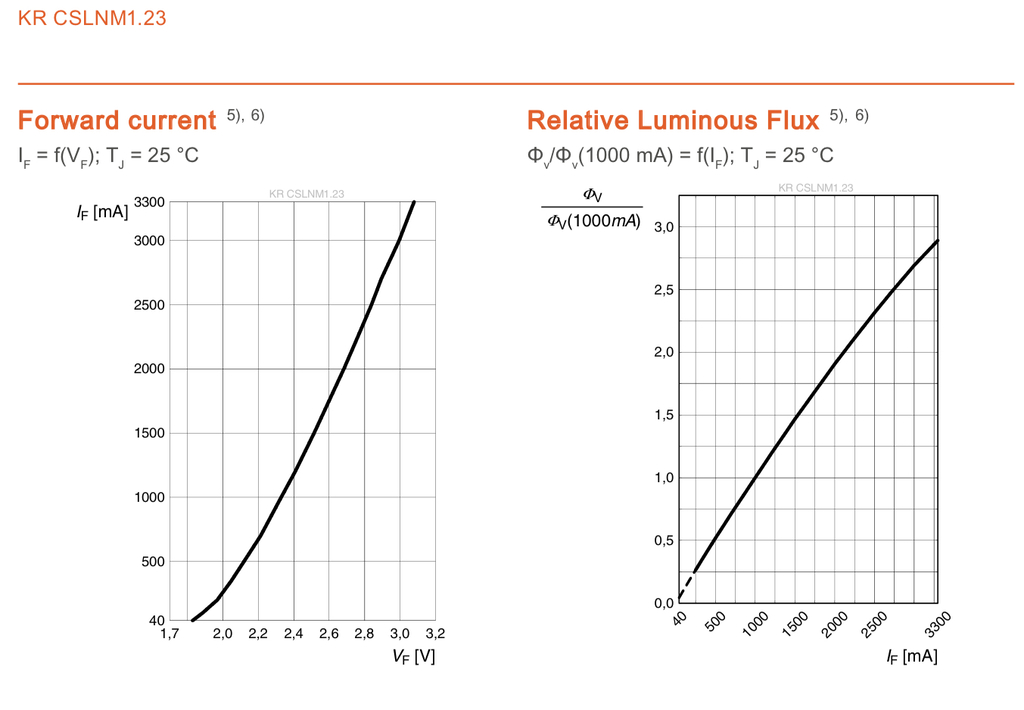Hello everyone,
Acebeam kindly sent me a free sample of their brand new product L17 in return for a review. Thanks a lot for the nice opportunity. If you are interested in another review of mine, you may want to check out the Acebeam W30 LEP review here: https://budgetlightforum.com/t/-/57083.

What's special about Acebeam's L17?
While the market is quite flooded with reflector flashlights, we now get to see more and more flashlights using TIR optics. These optics have many benefits over reflectors such as a great ratio of focusing and physical diameter, less weight due to plastic materials and lower material costs. Moreover, Osram's Ostar Projection Compact LEDs (a.k.a. "White Flat") has found its way from stage lighting into the flashlight business. This LED offers a remarkable performance for compact throwers at reasonable costs. Last but no least Lumintops successful and popular FW3A has lead the way for tactical e-switches, using a double-tube design.
All these benefits are reflected and combined in Acebeam's L17, offering you an unrivalled beam distance at the size of a rather compact 18650 light with a small head diameter as well as a noiseless tactical e-switch along with a decent constant current/brightness regulation for a very competitive and reasonable price well below $ 80.00. Now, Acebeam sells this light in three different versions using Osram's White Flat LEDs in white, red or green tint. This review here is about the green version which may suit well for hunters or military applications.
Some specifications:
- Dimensions: 140.5mm (length) x 40mm (head diameter) x 25.4mm (tube diameter)
- Weight: 150g w/o battery
- Emitter: Osram KG CSLPM1.2 Green
- Max. output: 2.000 lumens
- Max. runtime: 58 hours
- Max. beam distance: 820m
- Peak beam intensity: 168.100cd
- Driver: high efficiency constant current circuit design (without PWM)
- Battery: 1x 18650 lithium-ion battery or 2x CR123A lithium primary batteries
- Water resistance: IP68 waterproof to 5 meters
- Impact resistance: 1 meter
- UI: classic UI with stepped modes of ultra-low, low, medium, high and turbo as well as strobe
- Mode memory: yes (standard modes of low, medium and high)
- Low voltage protection
- Thermal regulation (probably 65°C)
- Electronic lockout
More specifications can be found under:
Unboxing
The light and its accessories come in a quite compact cardboard box...
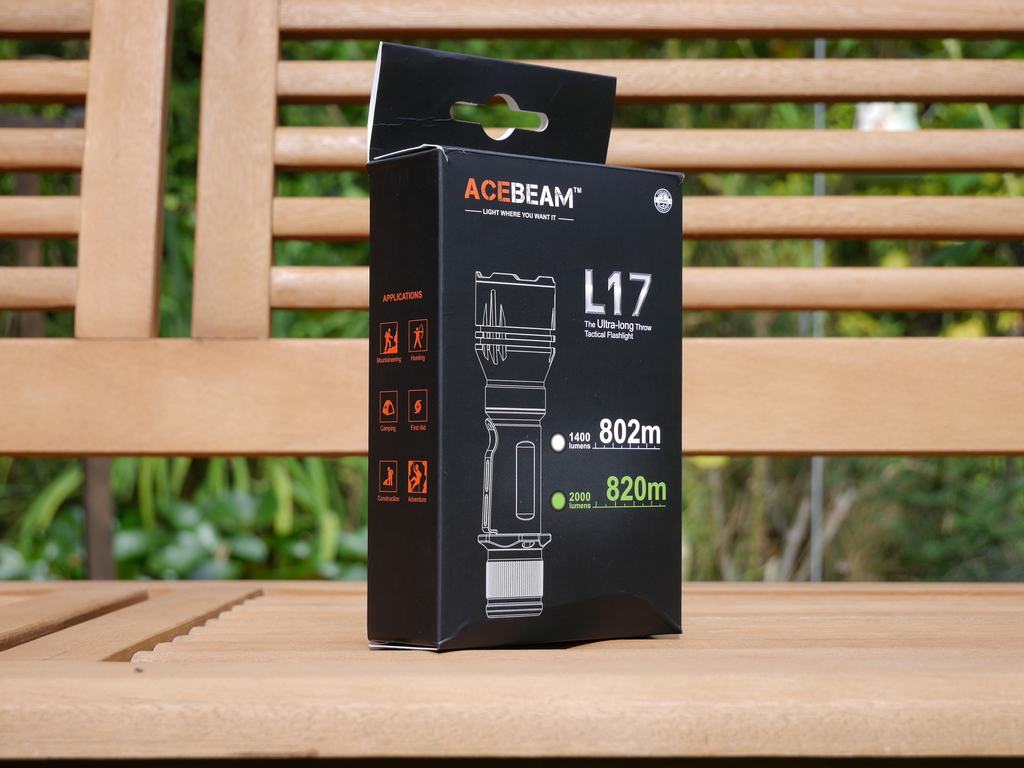


Inside you will find...
- Acebeam L17
- a high quality holster
- a microUSB to USB-A charging cable (for the optional Acebeam ARC18650H-310A battery)
- a lanyard
- two spare o-rings
- a spare switch boot
- the manual
- a warranty card
- a warning leaflet
As usual for Acebeam, the glas lens is protected by a dustproof film that has to be removed before first use.
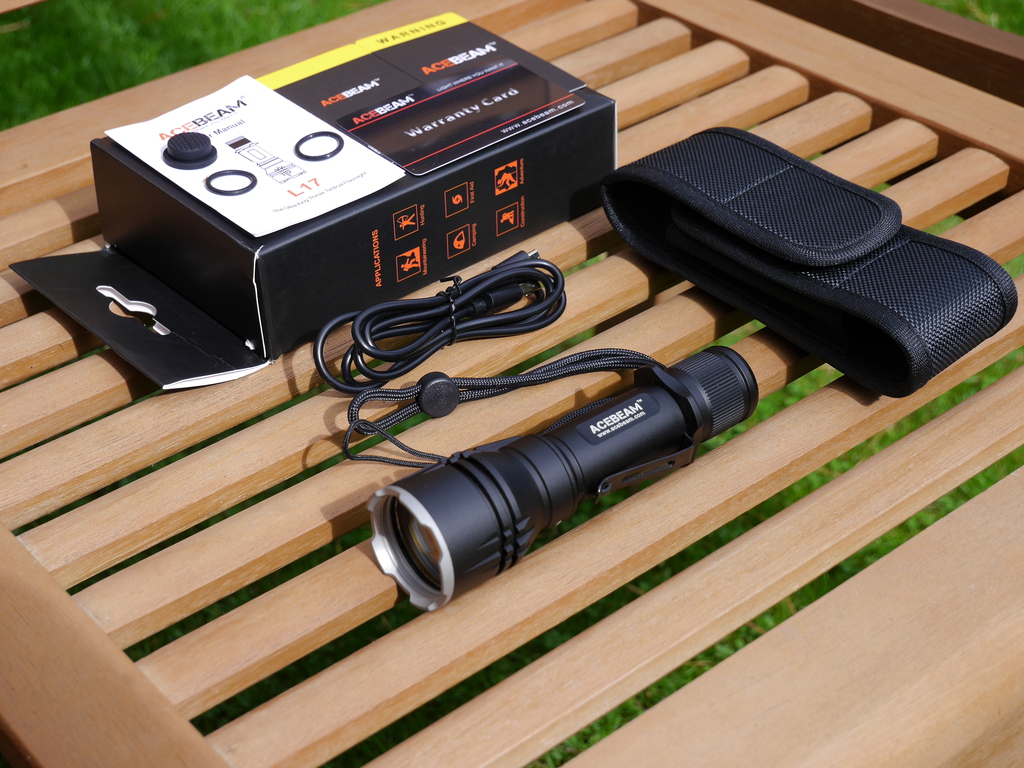
A closer look at the front of the light, using ultra-low mode.
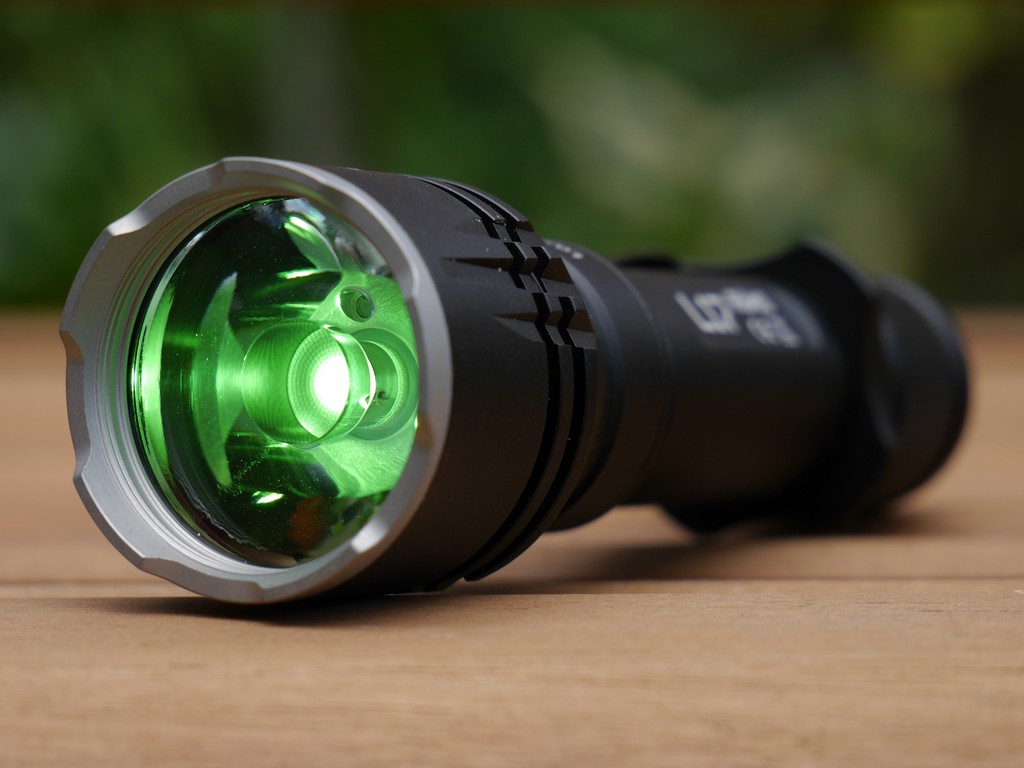
The outer appearance leaves no room for complaining. Everything is well machined, anodized and assembled.
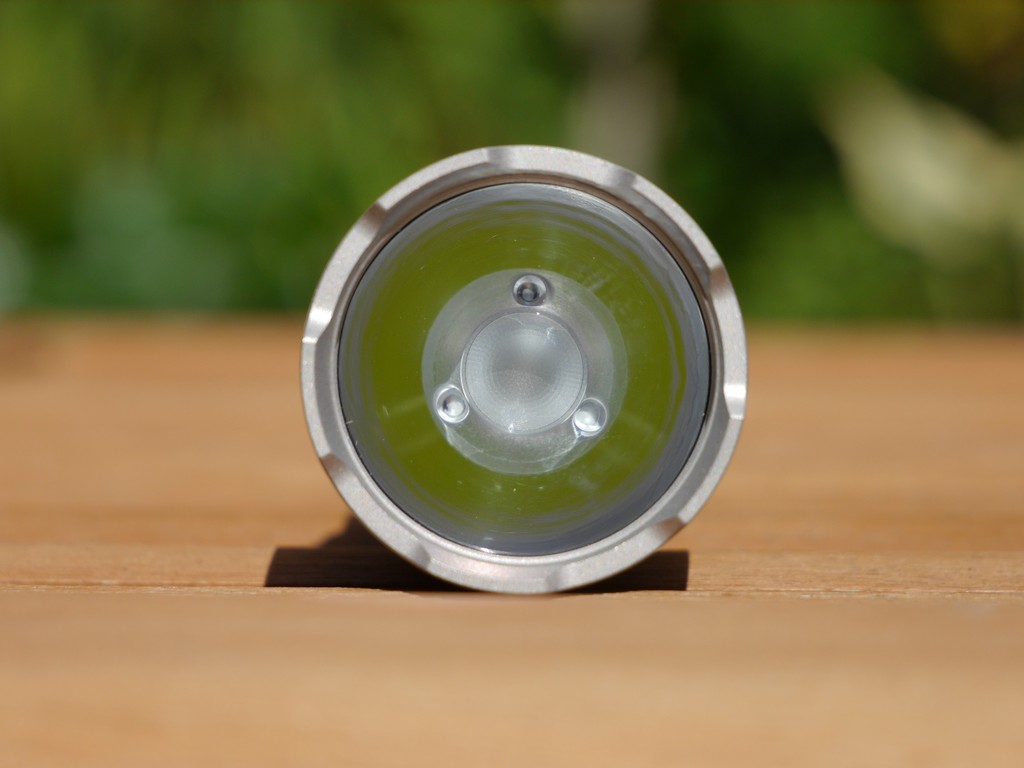
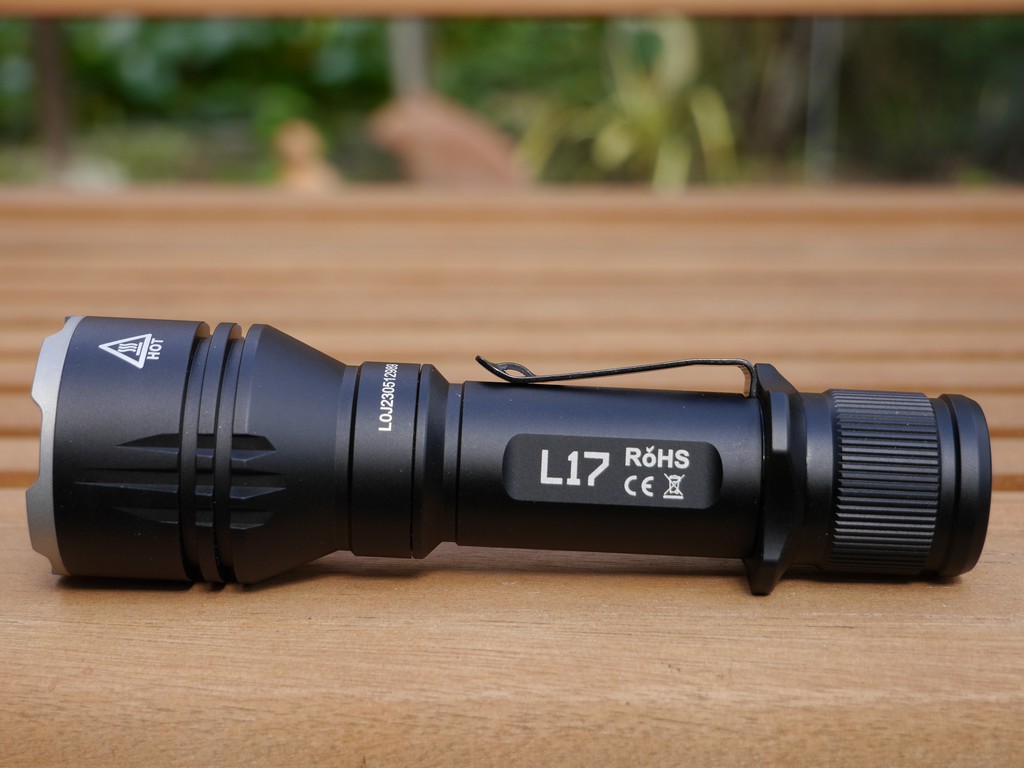
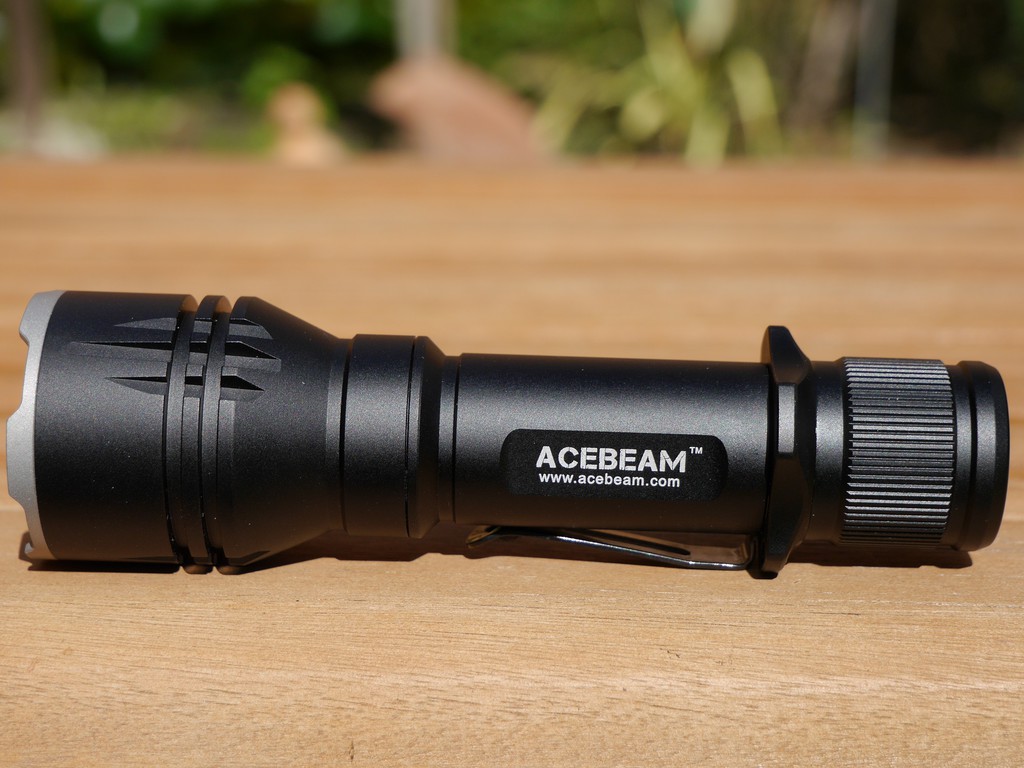
The soft touch tail switch is absolutely noiseless but cannot be operated in momentary mode. However, Acebeam offers an optional remote switch with three buttons where one button is for momentary mode only, see advertising picture below courtesy by Acebeam.
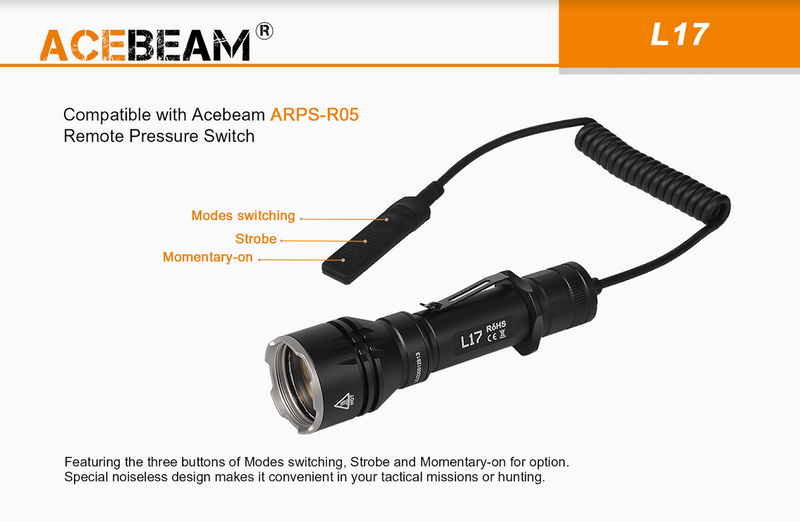
Acebeam kindly supplied the light with an Acebeam battery, see more below. The double tube design is well-made. Unfortunately, I did not manage to unscrew the tube from the head as it was extremely tight.
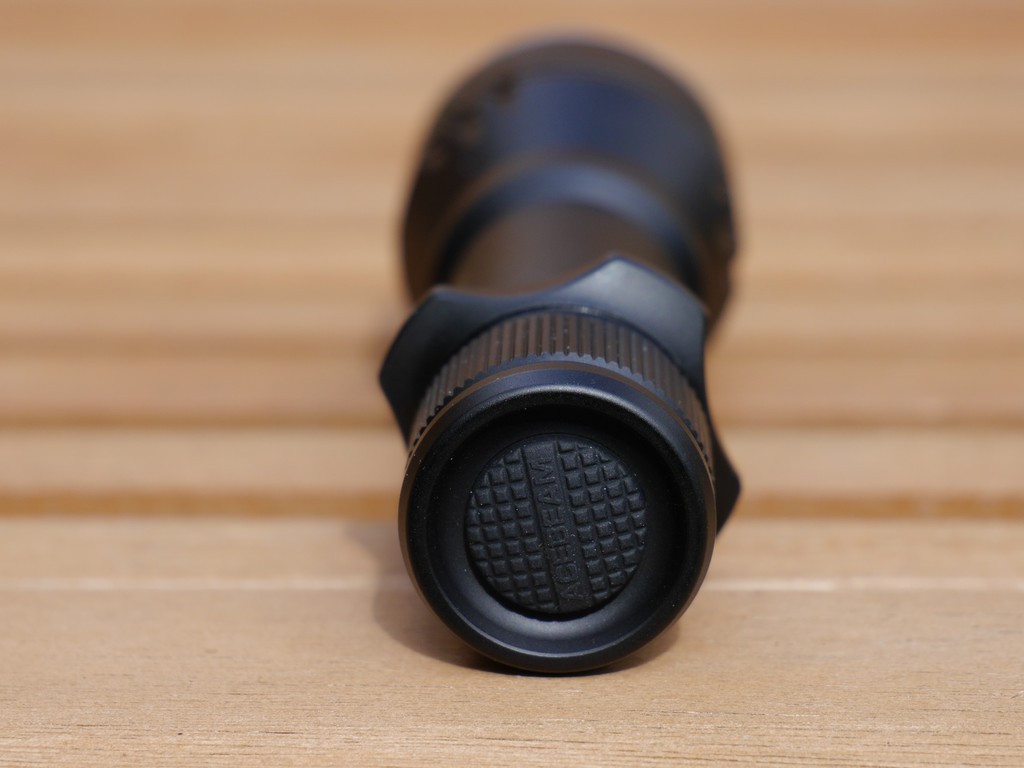
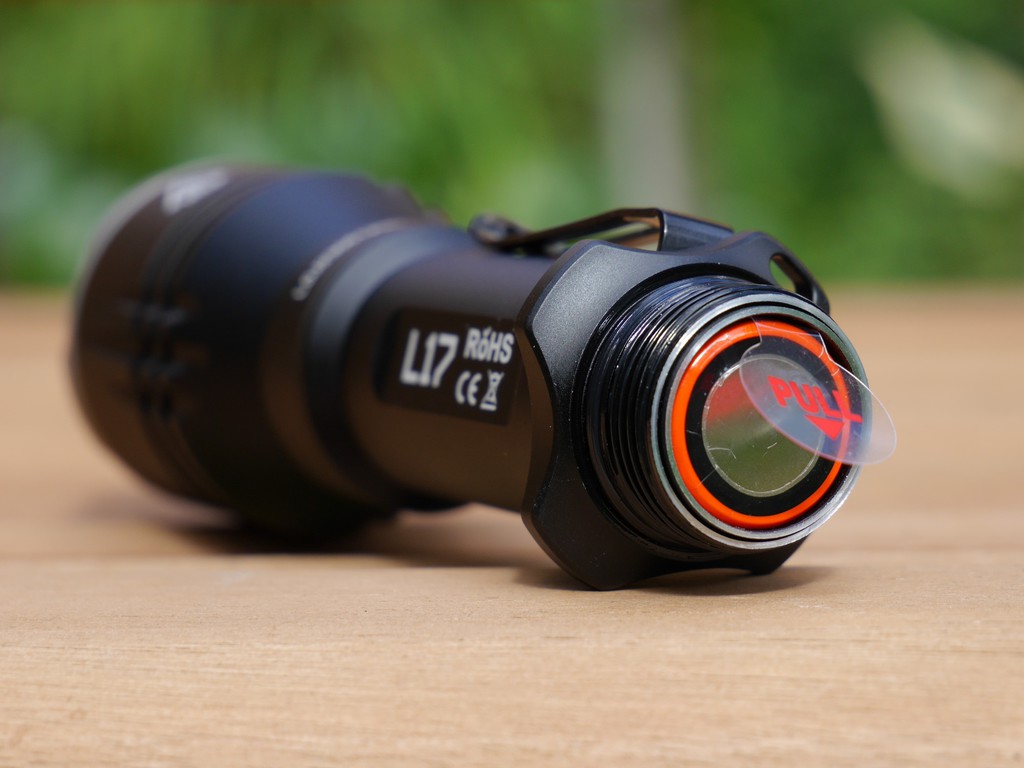
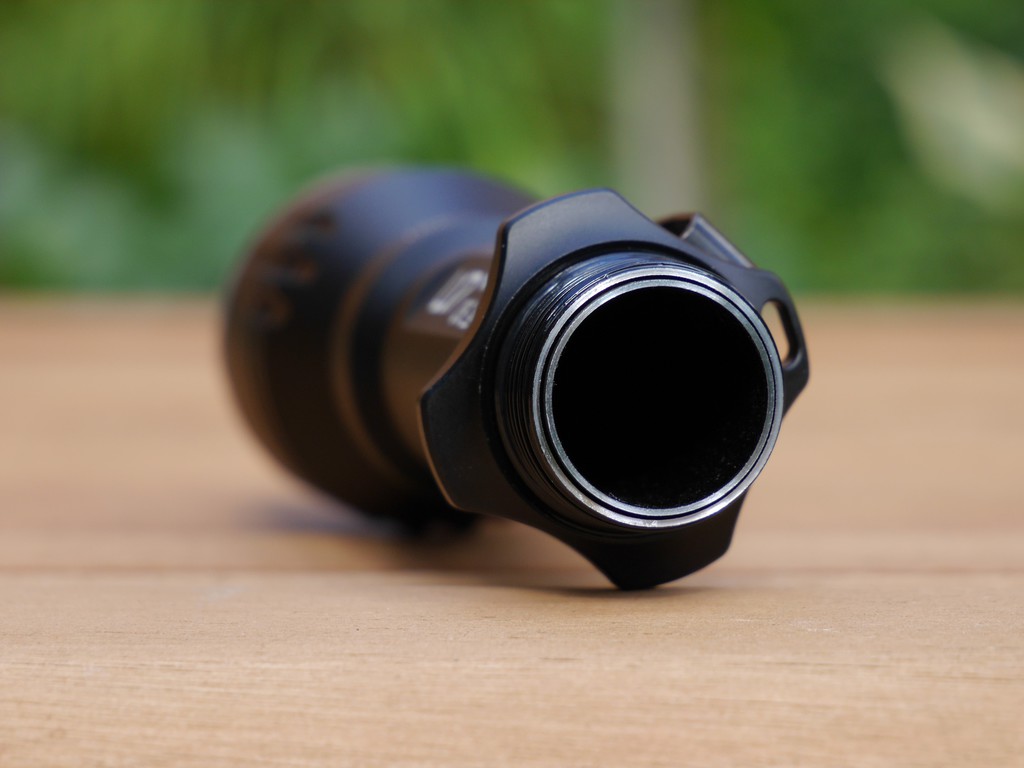
The tactical cigar grip ring can be easily removed as well as the clip. Threads are very well greased, so twisting the tailcap works like a charm. Acebeam used a very innovative way to enable contact with both tube ends. This could result in much less contact problems as reported in some of Lumintops FW3A lights. The L17 fits gently into the holster for those who want to put it onto the belt.

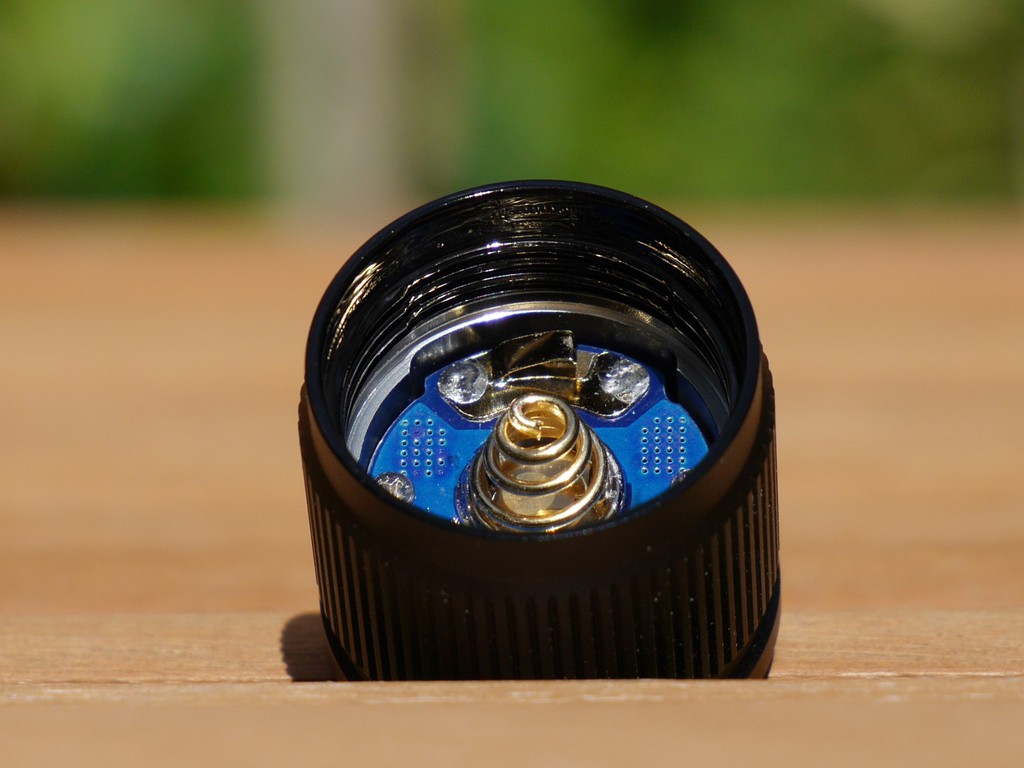

Using the battery in Acebeam's L17
The optional 18650 3.100mAh battery (ARC18650H-310A) has 69mm in length and can be recharged with the supplied microUSB cable. It came with a resting voltage of 3.76V. There is a charging indicator which is red on charging and turns green when charging is finished. After charging with the microUSB cable the battery indicated 4.18V resting voltage. To my surprise the LED keeps on glowing green afterwards and gets dimmer as the voltage drops. I don't know what this everglowing LED is useful for as its (very low) current drain may affect long-term storage of the battery. Since it's a protected battery, there should be no harm, though. Standard 18650 batteries work properly with the L17 as long as they have a button top or a solder blob. Some flat tops may work, too. However, rattling the light back and forth might result in power failure during operation.
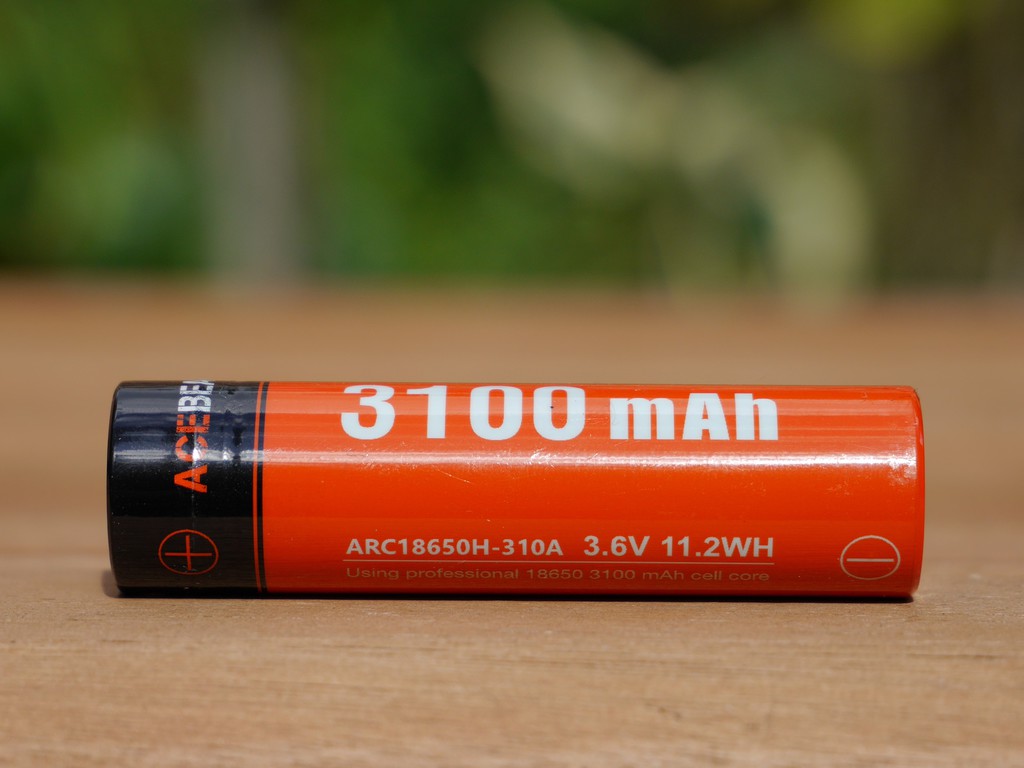
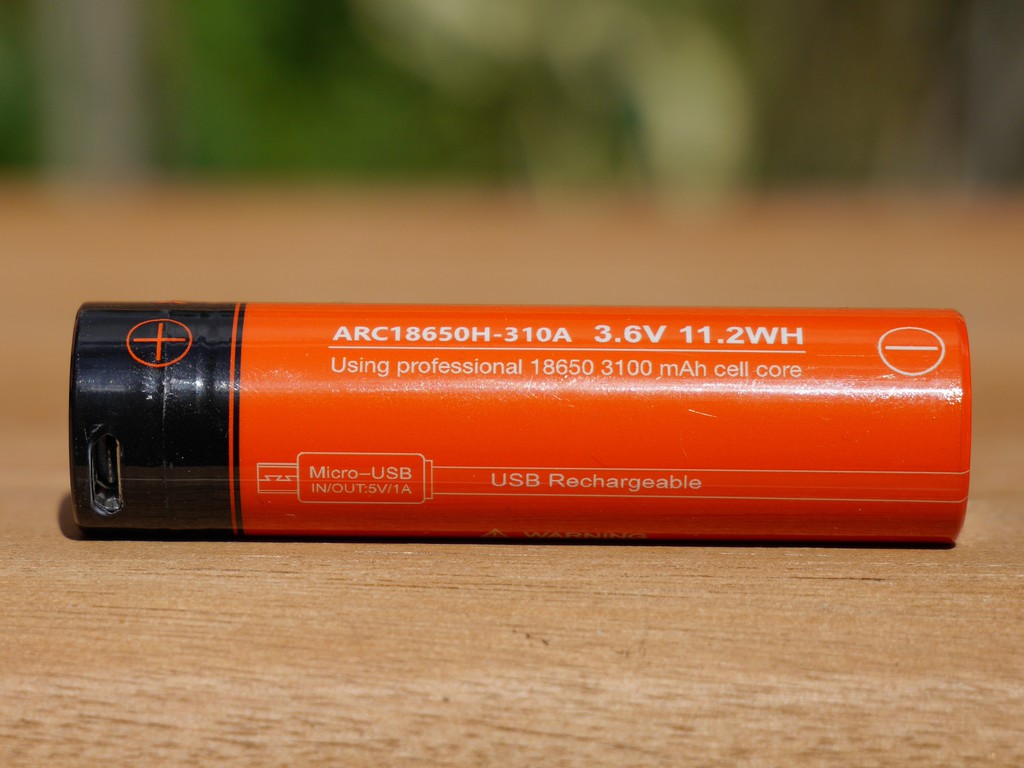

I tested the battery's capacity using a Miboxer C2-4000 charger at 1A discharge current (C-D-C procedure). Please take the numbers with a grain of salt but 2.895mAh seem quite okay and should match the nominal capacity of 3.100mAh (usually measured at lower discharge currents).
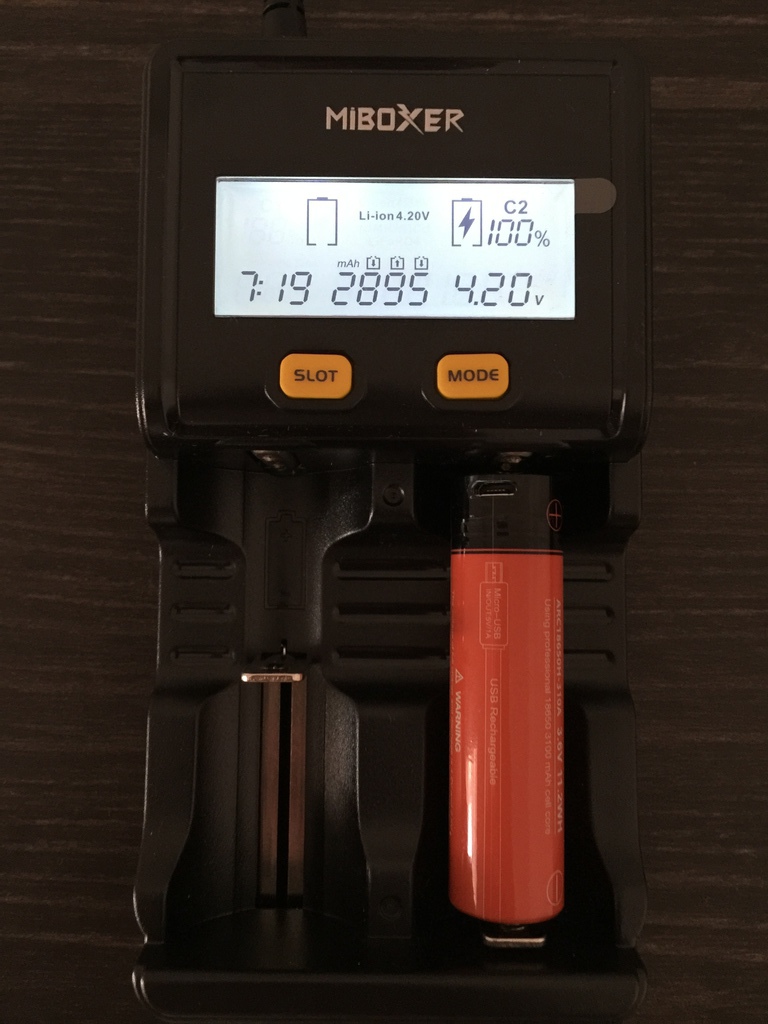
I tested some other (cheap) third party microUSB charging cables but they would not work correctly. With the supplied microUSB cable the battery was properly charged at a bit more than 1A.
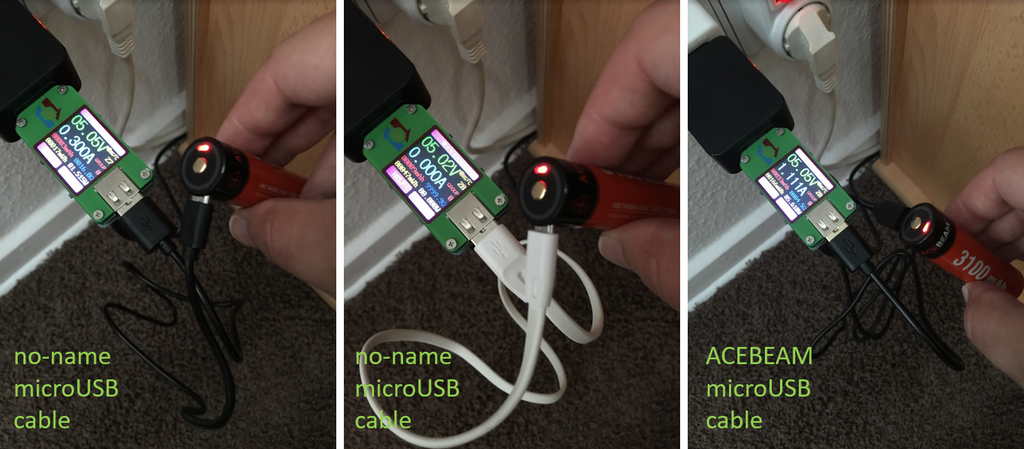
Size comparison
Below you see some flashlights for comparison and reference. These lights were also used for the beamshot comparison. I chose them by purpose in order to highlight and compare the different beam profiles as well as the color rendition of green respectively monochromatic light in darkness. From left to right...
- Odepro KL52 Plus zoomlight (fitted with the XP-E green dropin module)
- Acebeam L17 (using Osram's KG CSLPM1.2 @ 2.000lm)
- Amutorch New VG10 (using Osram's Ostar Projection Compact LE R Q8WP with red light)
- Sofirn's new SC31 Pro (using Luminus's SST40 6.500K 70CRI @ 2.000lm)
- Wurkkos FC11 prototype (using Samsung's LH351D 5.000K 90CRI @ 1.300lm)
- Wurkkos WK40 prototype (using Cree XP-L2 and Luminus SST-10 in blue, green and red color)
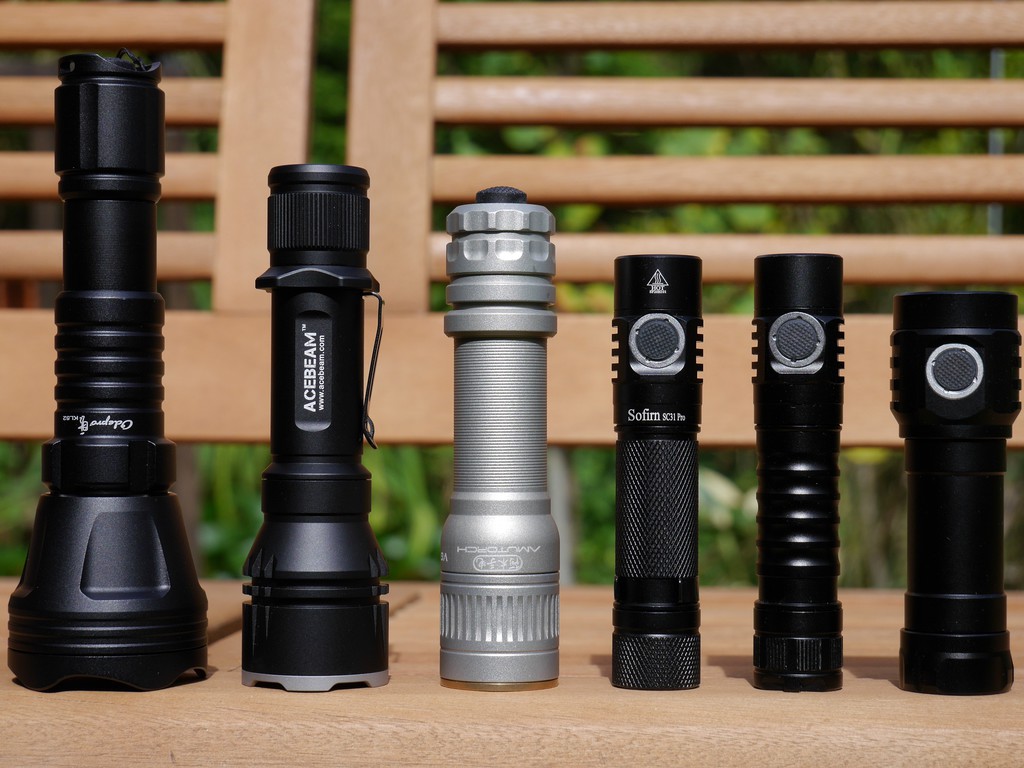
User interface & mode spacing
Acebeam keeps using their popular and foolproof UI with stepped modes.
From OFF
- 1x click to turn ON (using mode memory)
- 2x click for turbo mode (2.000lm)
- 3x click for strobe mode
- Hold 0.5s for accessing ultra-low mode (25lm)
- Hold 3s for electronic lockout => to unlock hold 5s, the light will turn on at ultra-low mode
From ON
- 1x click to turn OFF
- Hold to cycle through standard modes (low 75lm => medium 230lm => high 500lm => low 75lm…)
- 2x click for turbo mode (another 2 clicks to return to previous standard mode)
- 3x click for strobe mode
While testing the light I got the impression that mode spacing between low, medium and high more is well done, see also runtime and thermal analysis below. High and medium mode are both very useful whereas turbo mode is quite blindingly bright even on medium distances (15-30m). I'm a bit torn with the ultra-low mode which is way too bright to be considered as a typical 'moonlight' mode. But as maukka already mentioned for the white L17, a thrower light is not meant to be used for ultra-short distances like searching keys in one's bag/purse.
Runtime and thermal analysis
The test ran for about 4 hours. As noted in other reviews of the L17, the output is very well regulated on all modes. The thermal management and constant current circuit of the L17 works very efficient and keeps a constant brightness of about 46% (approx. 900lm) with a settled head temperature of 55°C for about an hour before a second stepdown regulates it down to 6% with a low but still useable mode. The light gets rather hot in its initial phase with close to 70°C. Personally, I like it this way as otherwise the stepdown would be triggered much earlier than after 4 minutes. The thermal heat transfer from head to tailcap is well done as can be seen on the pictures of the thermal imaging camera. After a while the entire body structure shows an evenly distributed body temperature of approx. 55°C. After 4 hours runtime the battery was nearly fully depleted.

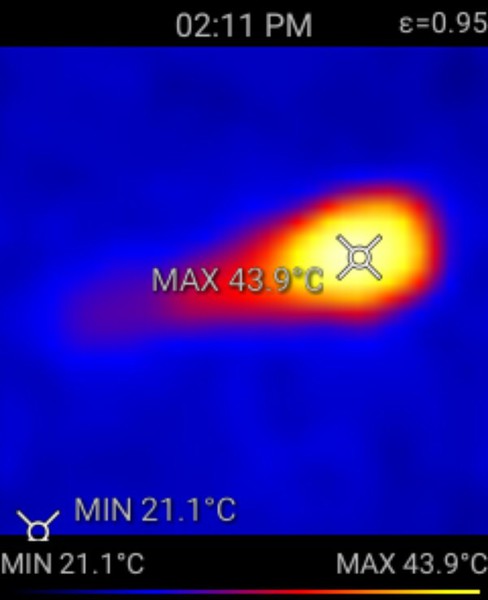

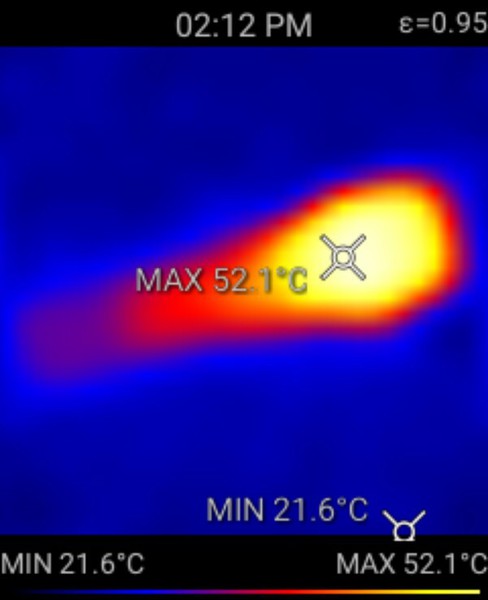
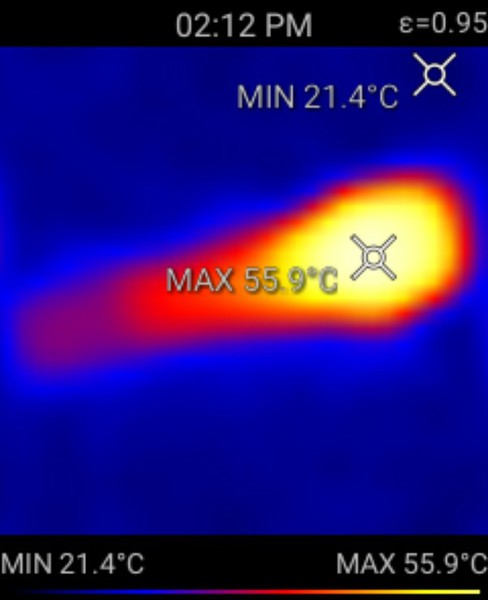
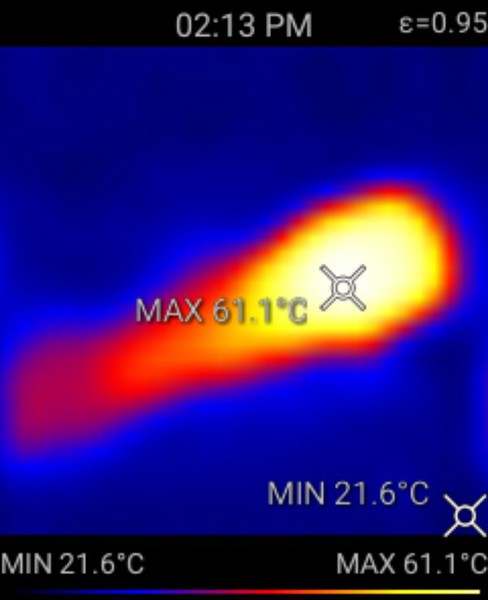
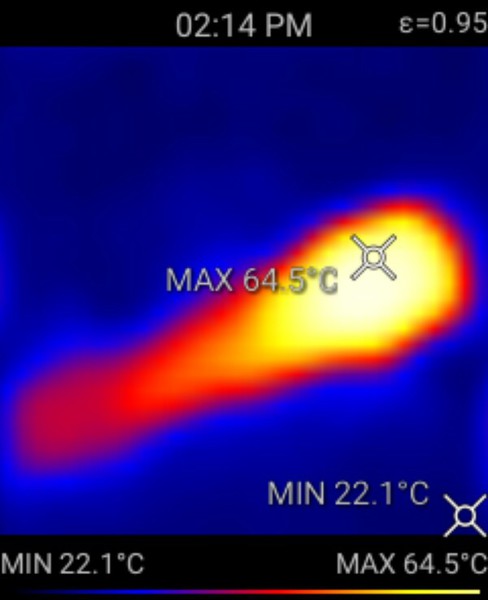
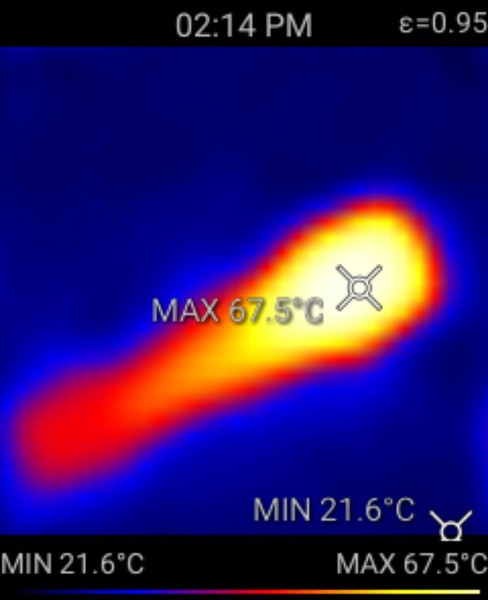
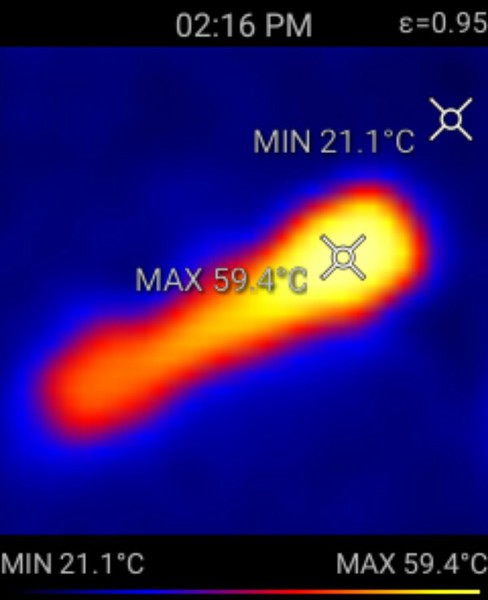

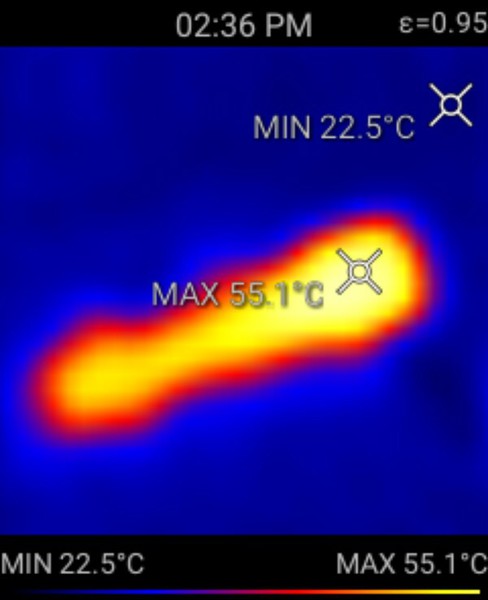
Beamshots
All beamshots were made with a Panasonic Lumix DMC-G6 digital camera using following settings:
Focal length: 12mm
ISO: 400
Aperture: f / 5.6
Shutter speed: 4s
These results represent the actual perception by the human eye.
Location #1: The white house is about 120m far away.
Acebeam L17 on turbo mode
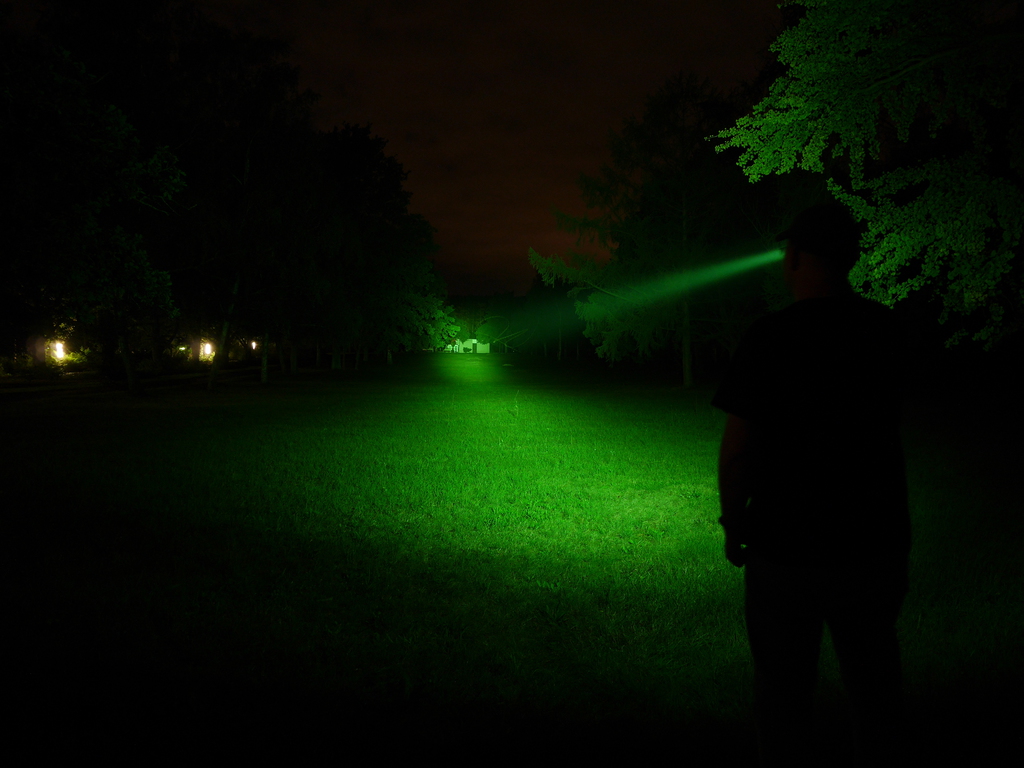

Acebeam L17 on high, medium and low mode (from left to right)

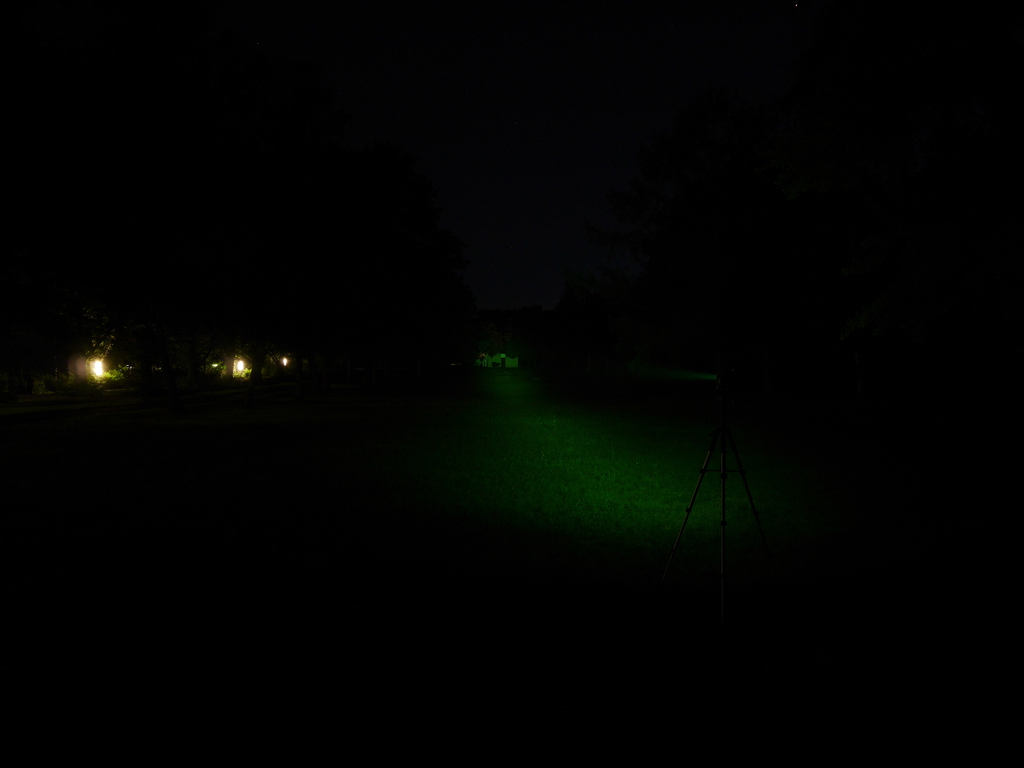

Amutorch New VG10 on high mode
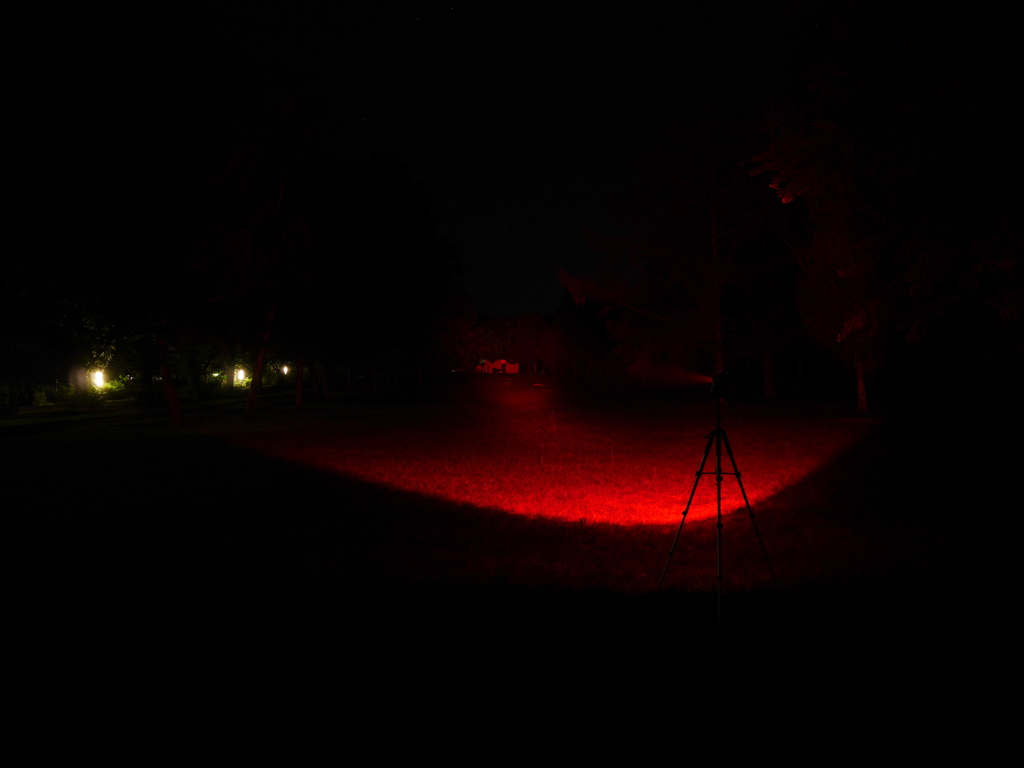
Wurkkos WK40 prototype on green mode

Wurkkos WK40 prototype on white, red and blue modes



Sofirn SC31 Pro on turbo mode
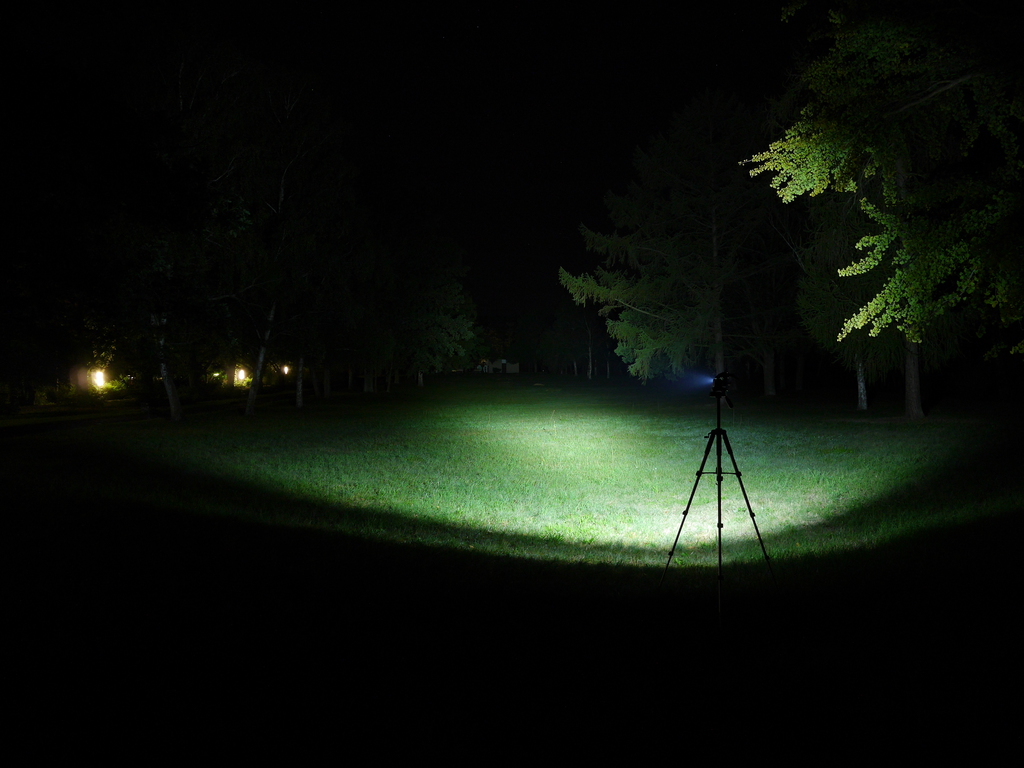
Wurkkos FC11 on turbo mode

Odepro KL52 Plus with green dropin (focused)

Odepro KL52 Plus with green dropin (defocused)

Location #2: The illuminated trees are about 35m far away.
Acebeam L17 on turbo mode
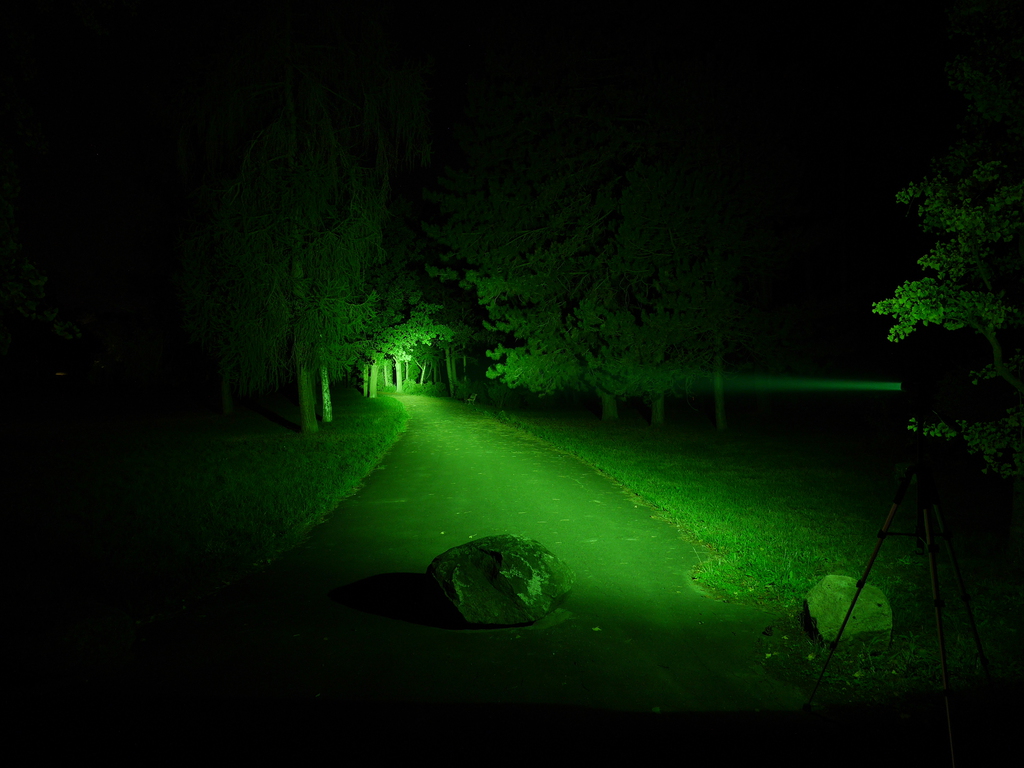
Acebeam L17 on high, medium and low mode (from left to right)
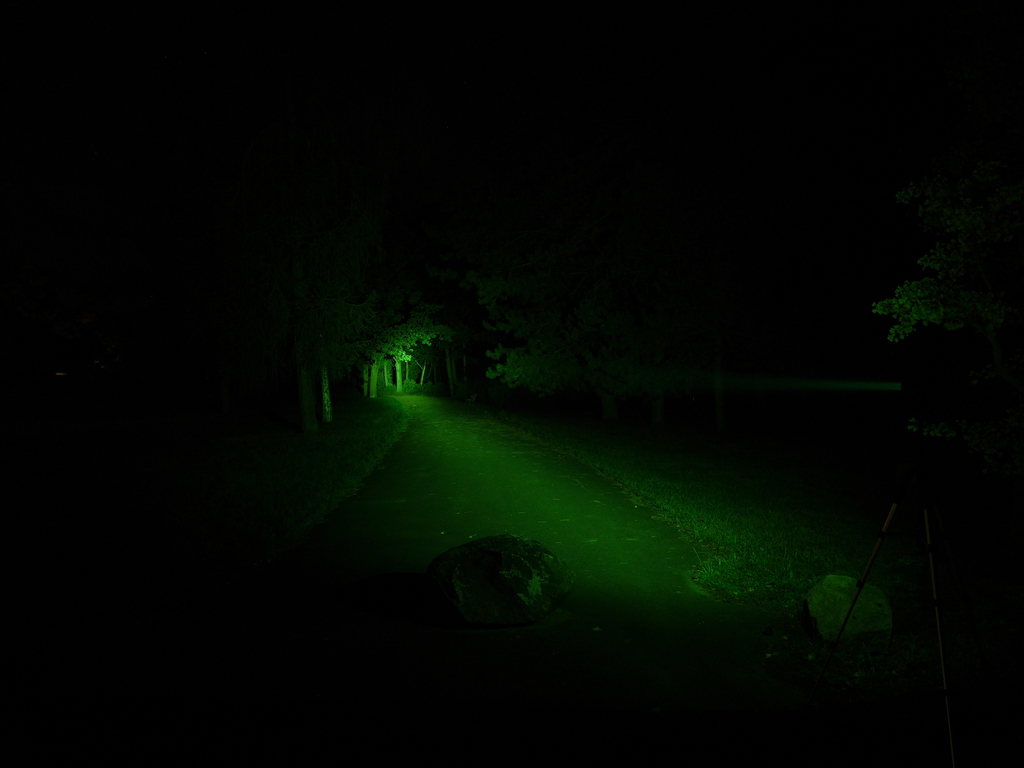
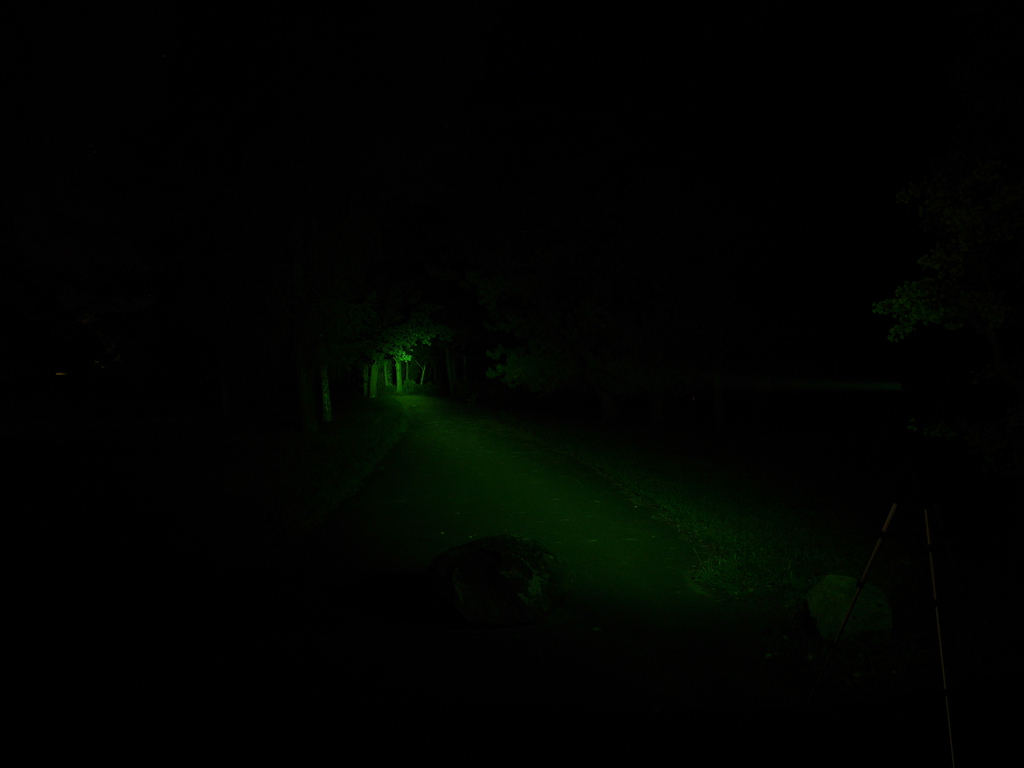
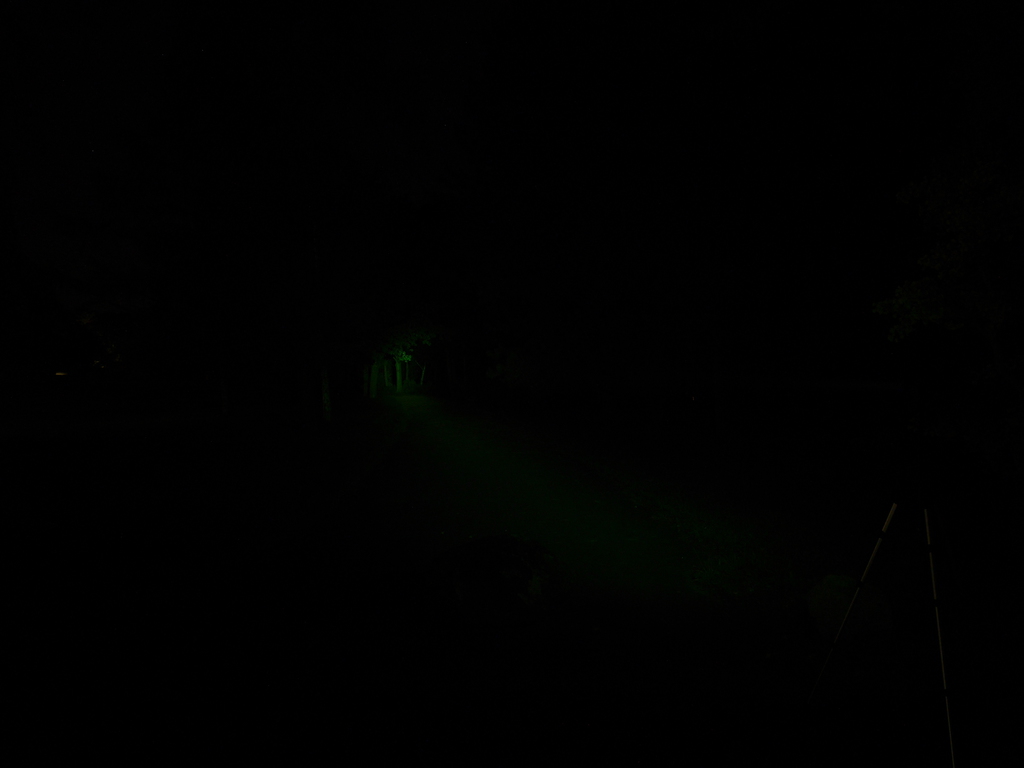
Amutorch New VG10 on high mode

Wurkkos WK40 prototype on green mode

Wurkkos WK40 prototype on white, red and blue modes


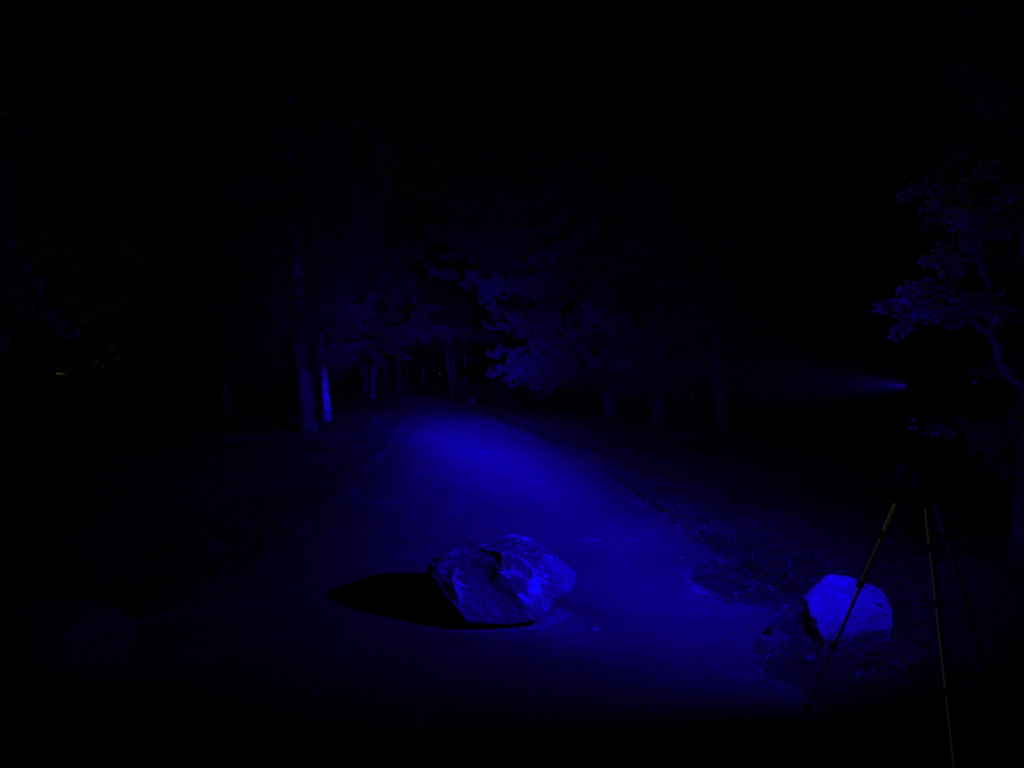
Sofirn SC31 Pro on turbo mode

Wurkkos FC11 on turbo mode

Odepro KL52 Plus with green dropin (focused)
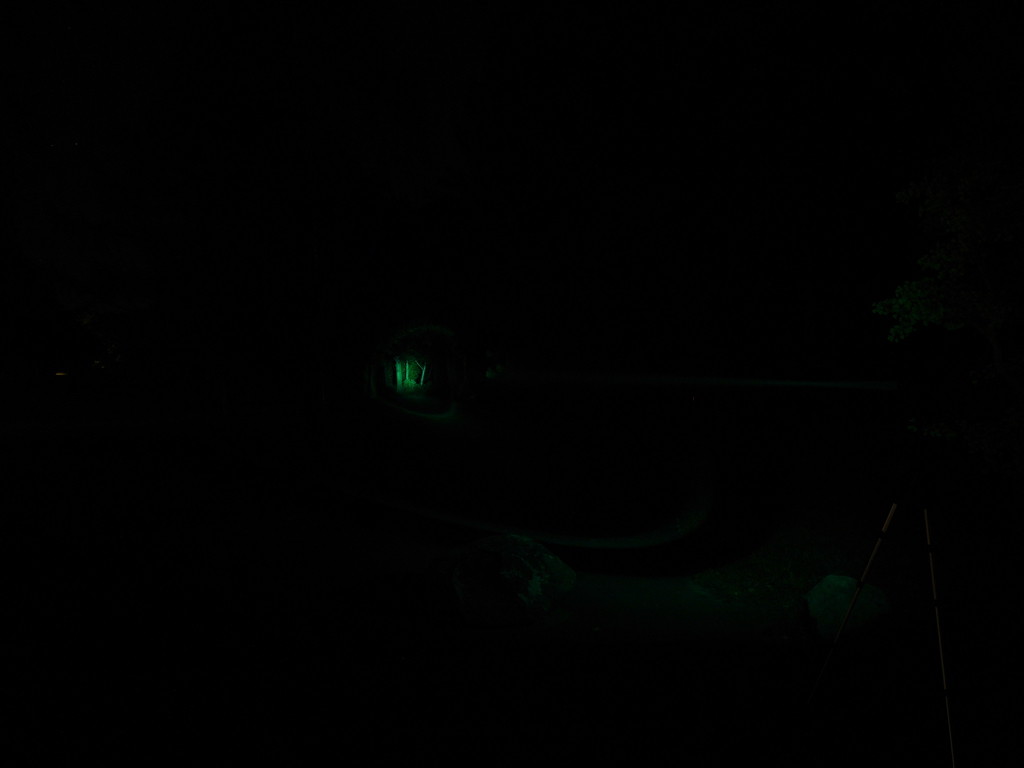
Odepro KL52 Plus with green dropin (defocused)

Conclusion & Verdict
These beamshots prove that Acebeam created a little powerthrower of 2.000 lumens intense green light with a remarkable beam distance. It easily outperforms any zoomlight in existence and eradicates its downsides of low efficiency in focused alignment and missing spill. Talking about spill, L17 produces a good amount of spill even though most of the light is collimated into the hotspot. Unlike LEP lights you get enough spill on turbo and high mode for orientation in darkness. However, for walking one's dog or close distance lighting I would recommend using another (second) flashlight. The L17's strenghts are definitely in mid-distance scenarios like searching, hunting, police/military applications. In my opinion, this flashlight fills the gap between classic small sized reflector lights (using a high proportion of spill) and LEP lights with no spill at all but extreme beam distances. For most customers this light could be more useful in everday usage than any LEP light.
The green tint color is for sure somehow exotic to most people's eyes but unlike red or especially blue light, green light did not cause any confining or even discomforting feeling after many minutes of using in pitch black darkness. As the human eye is most sensitive to green light, small amounts of light in this wavelength will suffice for orientation.
Acebeam successfully demonstrates the benefits of combining a thrower LED and a narrow-beam optic with a small-sized host. While some months ago beam distances of up to 800m with more than 1.400lm required significantly larger reflector/head designs we now get to see more and more small-sized EDC-like lights with astonishing performance. Acebeam's most promising competitor is Manker's MC13 which is currently using the smaller, less powerful but even more efficient CULNM1.TG (Osram Boost HX). The odds are good that they will try using the CULPM1.TG to match or outperform Acebeam's L17 anytime soon. As usual, competition is a good thing and so I will be curious if Acebeam will be using Osram Boost HX in future batches of the L17, too.
Let's wind up this review with the Pros and Cons...
Pro:
㊉ Impressive ratio between beam distance and size/weight
㊉ Very competitive price/performance/quality ratio with less than $ 80.00
㊉ Great quality in material selection and assembly (no dust, no scratches, no nicks from CNC machining)
㊉ The noiseless switch works like a charm being not too cushy or too stiff
㊉ Well-chosen design with a tactical tailswitch, compatibility to remote switches (for mounting on rifles), efficient TIR optic and Osram's 2mm² emitters
㊉ Constant current driver for stable output and compatibility to 3V CR123A primary cells
㊉ Thermal management that pushes the LED to its limits => great performance
Neutral:
O Thermal management that pushes the LED to its limits => results in lots of excess heat
O The user interface is very intuitive but some user maybe miss a ramping mode and a way to indicate the battery's voltage
O An additional true 'firefly' or 'moonlight' mode would look gorgeous in this TIR optic
Con:
㊀ Momentary mode is possible but only when using an optional remote switch which is not supplied with the light
㊀ 18650 battery size compatibility is somehow a bit restricted as flat top batteries may not work properly
㊀ Not a real downside but the many laser engravings on the tube somehow distract from the nice design of the light
